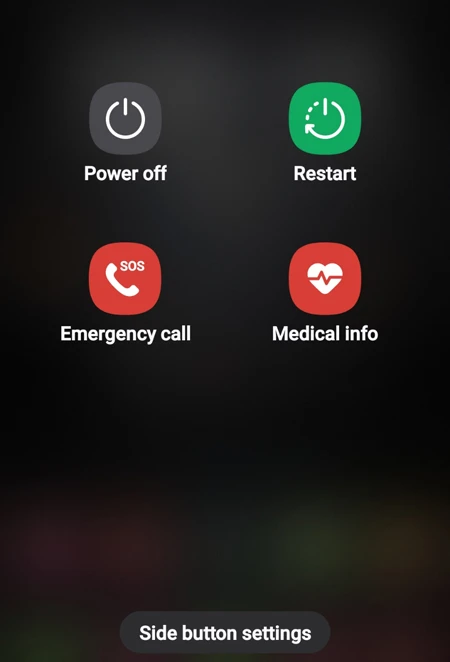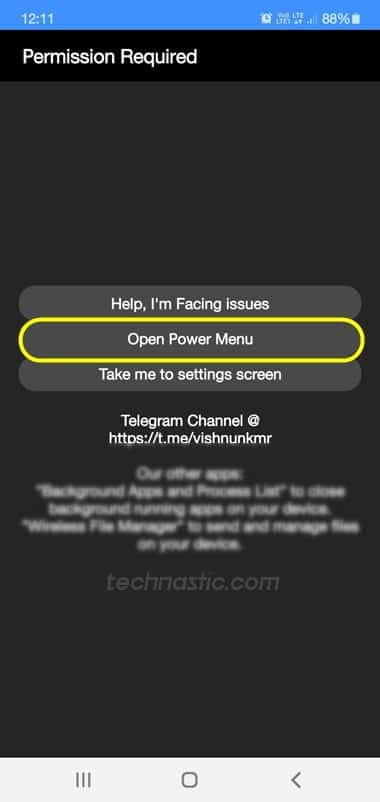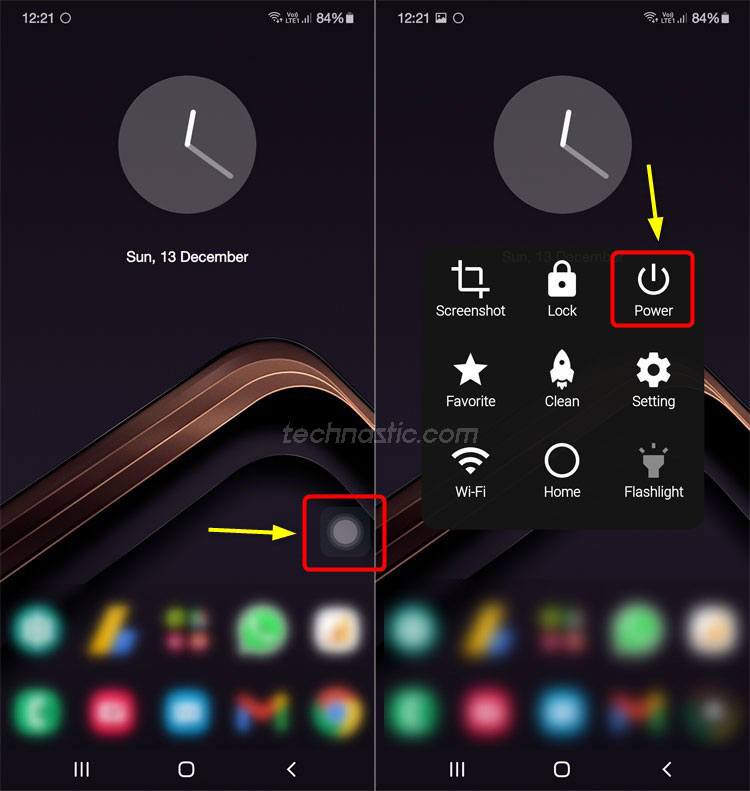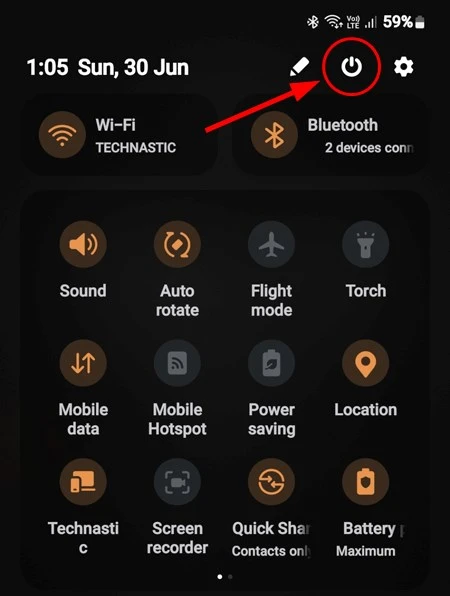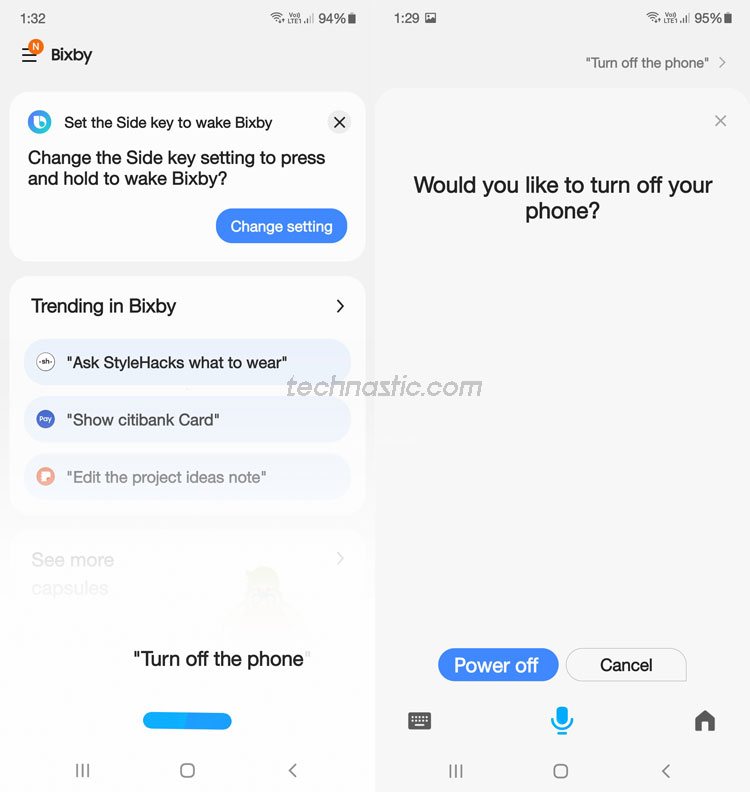Hardware keys are essential to the smartphone experience as they let us lock and unlock the screen, turn the device on or off, and access volume controls. However, accidental drops, overuse, mishandling, or poor build quality might make them non-functional. Using an Android phone with broken power or volume buttons can be challenging. This tutorial will discuss 9 methods to help you restart and turn off an Android phone or tablet without the power or volume buttons.
There are several ways to power off an Android phone or tablet with a broken power button. Whether you own a phone from Samsung, Xiaomi, Oppo, OnePlus, Vivo, or Realme, these tips will work on all Android devices.
1. Turn off the Android Phone via ADB
Using ADB to power off or restart Android devices might not be convenient, but it works.
- Download the latest Android SDK.
- Enable USB debugging on your Android device.
- Launch the Windows Command Prompt or Mac Terminal.
- Connect your device to your computer via a compatible USB cable.
- Issue the following command to ensure your phone and computer are connected properly.
adb devices
- Now, execute the following ADB command to switch off your Android phone. Here, ‘p‘ stands for ‘power off‘.
adb shell reboot -p
- Your Android device will power off without using the Power button.
- The following ADB command will reboot your device.
adb reboot
The ADB method can allow you to switch off your phone when the touchscreen is not working.
2. From the Power Menu via ADB
ADB can be helpful in tricky situations. You can trigger the long-press Power menu action on your Android device using ADB commands. Just launch the command window, connect your phone to the computer, and execute the following command:
adb shell input keyevent 5 sleep 5
This will make the Android Power menu appear, and you can then select the Power Off or Reboot option.
3. Using Web ADB in a Web Browser
WebADB is a web app that runs on all Chromium-based browsers (like Chrome, Edge, Opera, etc.) and performs ADB-related tasks on connected Android devices. Follow the quick steps below to turn off or reboot your Android phone from a web interface.
- Turn on USB debugging on your device and connect it to your computer via a USB cable.
- Open the WebADB web app in your browser.
- Click the Connect button in the top-left corner of the screen.

- When your device is connected, click the Power Menu option.
- If you want to power off your phone, click the Power off option. The Press Power Button option wakes or turns off the screen.
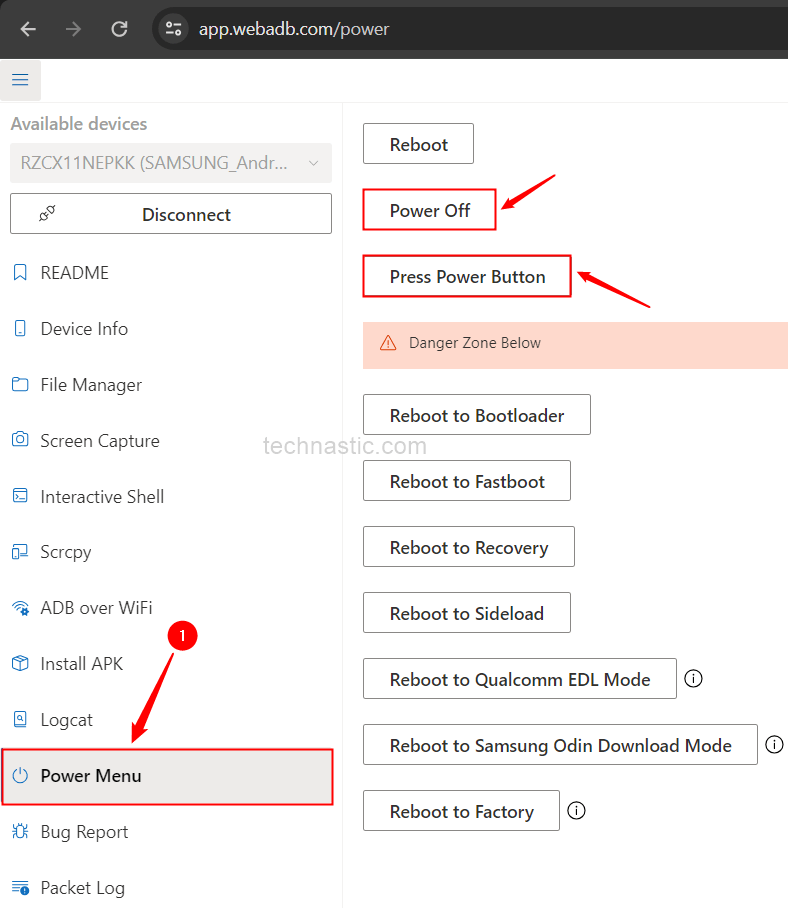
4. Using ADB AppControl
A free tool named ADB AppControl can help you restart your Android phone normally or turn it off. You can also use this tool to reboot into the bootloader, recovery, or download mode. ADB AppControl’s interface is very user-friendly and easy to use.
- Download ADB AppControl and install it on your Windows PC.
- Launch the tool and connect your Android phone or tablet via a USB cable.
- The USB debugging option must be enabled on your Android phone for ADB AppControl to work.
- Click Tools > Reboot.
- Select ‘system‘ (to restart) or ‘power off‘ from the drop-down menu.
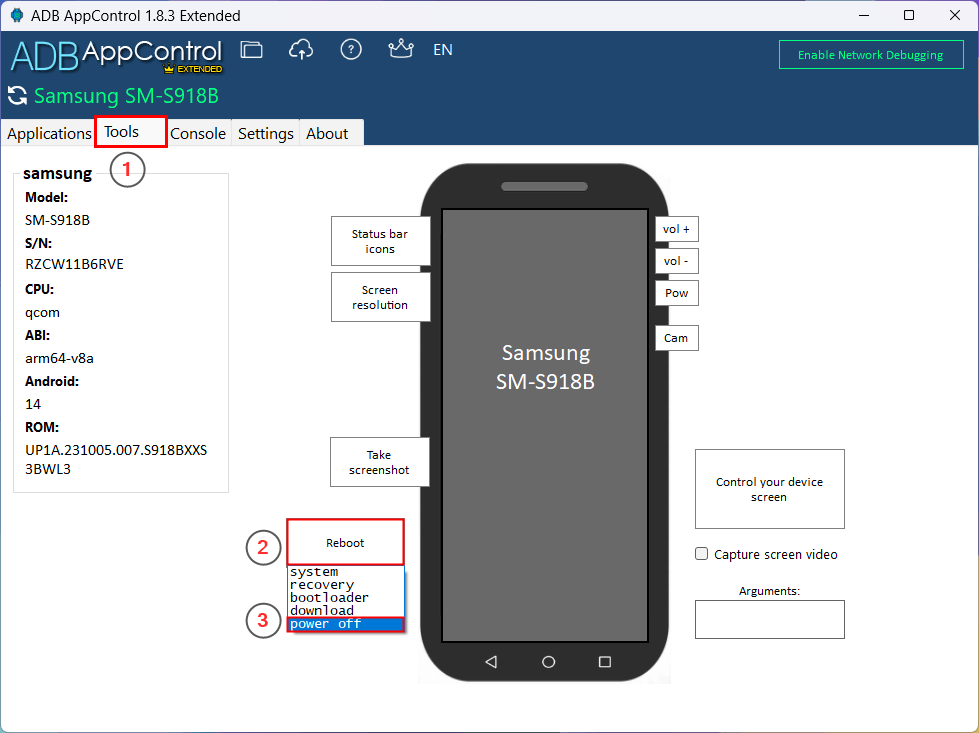
- Finally, click OK to restart or turn off your device.
5. Via the Accessibility Menu
All Android devices have a set of Accessibility settings to help the physically and visually impaired. By enabling Accessibility/Assistant Menu, you can add an Accessibility shortcut to your phone’s navigation bar or a floating menu icon. You can enjoy quick shortcuts to launch Google Assistant, Recents, Power Menu, Screenshots, and so on by tapping the Accessibility Menu icon.
Follow these steps:
- Open Settings on your Android device and tap Accessibility. On devices from Chinese OEMs like Xiaomi, Vivo, Oppo, OnePlus, Realme, Huawei, etc., you’ll find Accessibility under Additional Settings.
- If you own a Samsung Galaxy phone or tablet, select Interaction and Dexterity and tap the toggle icon in front of the Assistant menu. A floating icon for the Assistant menu will appear on the screen as shown below. If you find the floating icon irritating, you can change its size, appearance, location, etc. by tapping the Assistant menu option.

- Just tap the floating Assistant menu icon to access the Power off menu. You can now power off your Samsung Galaxy device.
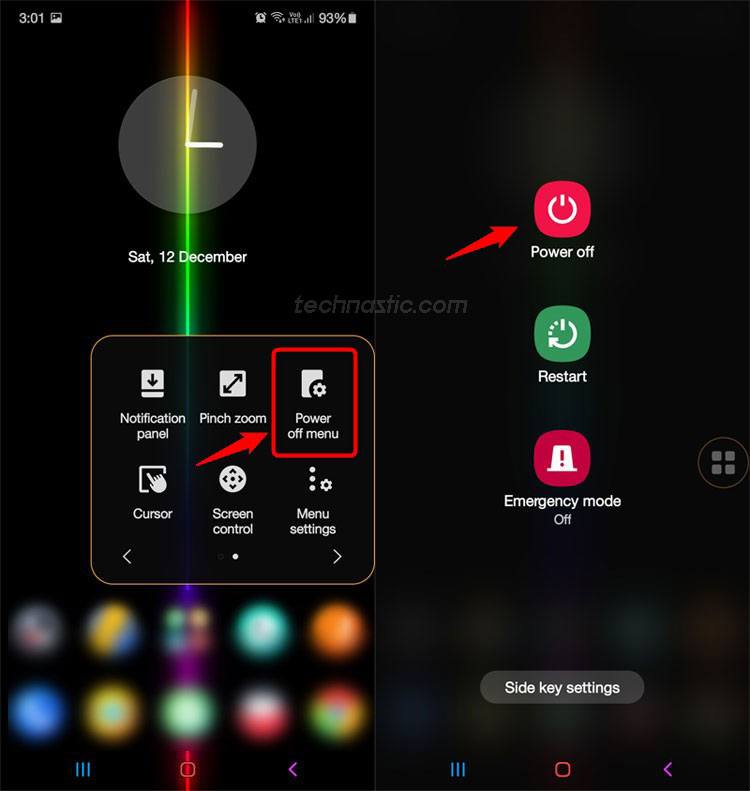
- If you have a phone from Xiaomi, Redmi, Vivo, Oppo, OnePlus, Realme, or Huawei, you can enable the Accessibility menu from Accessibility. The Accessibility menu icon will appear on the navigation bar. Just tap it to access the option to Power off your phone.
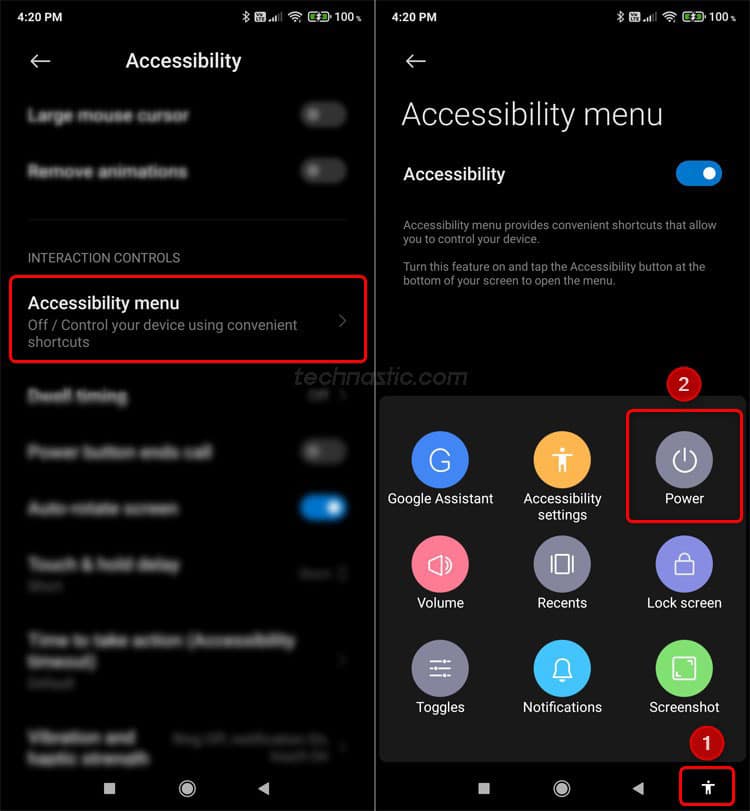
6. Using 3rd-Party Apps
The Google Play Store has several apps that allow users to power off and reboot a phone. All such apps require Accessibility permission and offer similar options like the Accessibility menu shown above. I tested some of the most-rated apps to turn off and reboot Android devices without pressing the Power key.
Phone Lock + Volume (OFF+)
Phone Lock + is a lightweight app that does its job without root. When Phone Lock is installed on your device, launch it from the app drawer. It’ll prompt you to select one of the 2 lock modes. Make your choice and grant Accessibility permission to the app when asked. Now, whenever you want to access the Power Menu to switch off or restart your phone, tap and hold the Phone Lock app icon. Tapping the app icon will lock your device immediately or after 5 seconds.
Power Menu: Software Button
Power Menu is another simple app that lets you launch the Power Menu with a single tap without holding the Power button. Of course, it will ask you to grant Accessibility permission under Installed Services for the first time.
Assistive Touch for Android
Assistive Touch for Android is a handy app that makes it convenient to access shortcuts to capture screenshots, lock the device, toggle Wi-Fi and flashlight, and trigger the Power Menu. The app lets you customize the shortcuts to perform your favorite tasks quickly. Just tap the floating touch icon and select Power from the menu to turn off your Android phone or tablet. One thing that I hate about this app is that it has too many ads.
7. Via the Power Menu in Quick Settings
Besides a physical power button, Android devices also have a soft power key. You can access this shortcut from the Quick Settings screen. Tapping this opens the Power Menu with options to power off and restart the device.
8. Turn off Samsung Devices via Bixby
Samsung Galaxy users can switch off their phones using a Bixby voice command. I also tried Google Assistant for the purpose, but it did not work.
Launch Samsung Bixby and use the “Turn off/Power off the phone” command. Bixby will ask you to select the Power off option. Just tap it to shut down your Samsung device.
9. Schedule Power Off Time
Android devices have a feature that allows users to schedule the power on/off and restart. I discovered this feature on a Xiaomi phone.
- Open Settings on your device.
- Tap the Search icon or bar on the settings menu page and type “schedule” into it.
- You’ll get a list of items that can be scheduled. Tap Schedule power on/off.
- On the next page, you can set the time when you want to power on or off your Android device automatically without using the Power key.

That’s all for now about turning off an Android device when the Power button doesn’t work, the screen is black, and the touch is not working.
Related Guide: Wake up a Phone’s Screen without the Power Button

